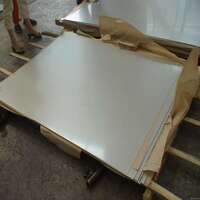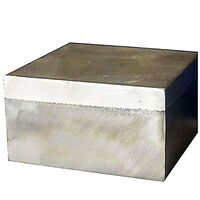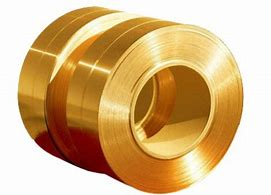1. Introduction
Metal clad building components—whether it’s a metal clad roof, steel facade, or corrugated steel siding—offer durability, sleek aesthetics, and long-term value. But like any building material, they’re not immune to problems. From rust on a corten steel plate to improper grounding of metal clad electrical wire, issues can arise during installation, maintenance, or even decades later. This guide walks you through seven of the most common metal clad headaches and how to fix them fast.

2. Rust and Corrosion on Metal Clad Surfaces
Even high-end clad metals like aluminum clad stainless steel or zinc clad dormer can corrode if improperly sealed or exposed to harsh environments. Corten steel siding, for example, develops a protective rust layer—but only under the right conditions.
- Inspect for flaking rust or white powdery deposits (a sign of galvanic corrosion).
- Clean affected areas with a wire brush and mild detergent.
- Apply a compatible metal primer followed by a UV-resistant topcoat designed for your specific metal type (e.g., zinc metal siding needs different treatment than copper siding).
- For long-term protection, consider upgrading to stainless clad aluminum or titanium clad panels in coastal or industrial zones.
3. Dents and Scratches on Metal Clad Walls or Roofs
Metal clad siding and standing seam facade systems are tough—but hail, ladders, or accidental impacts can leave unsightly dents. Don’t panic; many can be repaired without full replacement.
For minor dents in a metal clad house exterior, gently heat the area with a hair dryer to relax the metal, then use a rubber mallet to tap it back into shape. For deeper damage on a vertical standing seam metal siding panel, replace just the affected section. Always match the original finish—whether it’s Colorbond standing seam or PAC Clad HWP—to maintain visual consistency.

4. Noise from Metal Clad Roofs During Rain or Wind
A common complaint about metal clad roofs—especially corrugated steel facade or zinc clad roof systems—is the drumming sound during storms. The fix lies in proper underlayment and insulation.
Install metal clad insulation beneath the panels, such as closed-cell spray foam or rigid board insulation. This not only dampens sound but also improves energy efficiency. Ensure your metal weatherboard or standing seam siding is securely fastened to prevent vibration-induced noise.
5. Improper Installation of Metal Clad Electrical Wiring
Metal clad electrical wire (often called MC cable) is popular in commercial and residential settings for its durability. But mistakes happen—like failing to ground the armor or using incompatible connectors.
- Always use listed MC cable connectors when attaching to junction boxes.
- Verify the armor is bonded to the grounding system per local electrical codes (e.g., NEC Article 330).
- Never use aluminum clad steel wire in wet locations unless rated for it—opt for copper-clad (CU clad wire) or stainless variants if moisture is a concern.

6. Fading or Chalking of Painted Metal Clad Finishes
Over time, sun exposure can cause painted metal clad surfaces—like PAC Clad column covers or aluminum clad sheet siding—to fade or chalk. This isn’t just cosmetic; it can expose the base metal to corrosion.
Clean the surface with a mild detergent and rinse thoroughly. Lightly sand to remove loose particles, then apply a high-quality acrylic or fluoropolymer-based paint formulated for metal. For best results, choose factory-finished products like PAC Clad coping or Colorbond standing seam, which come with 20+ year warranties.
7. Thermal Expansion and Contraction Issues
Metal expands when hot and contracts when cold. If not accounted for during installation, this can cause buckling, oil-canning (waviness), or fastener failure in a metal clad building.
Always follow manufacturer specs for fastener placement and panel overlap. Use slotted holes or floating clips (common in standing seam systems) to allow movement. For large installations like a steel clad inc project or a full steel clad house, include expansion joints every 30–50 feet depending on climate.
8. Choosing the Right Metal Clad Type for Your Project
Not all clad metals are created equal. Understanding clad metal meaning helps you pick wisely. For example, aluminum clad steel offers corrosion resistance at a lower cost than solid stainless, while 2024-T3 clad aluminum is ideal for aerospace—not your shed.
Consider your climate, budget, and aesthetic goals:
- Coastal areas: stainless steel plate or titanium plate
- Rustic look: corten steel plate (but factor in corten siding cost)
- Low maintenance: zinc facade or copper siding
- Budget-friendly: exterior corrugated metal siding with zinc-coated steel
For sheds or garages, a metal clad shed with diamond plate steel base plates adds durability without breaking the bank.
9. Conclusion
Metal clad systems—from metal clad wire to full steel facade installations—deliver performance and style when properly selected and maintained. By addressing common issues like corrosion, noise, and thermal movement early, you’ll extend the life of your metal clad house or building. Always verify material specs (like ASTM A387 for alloy plate or 316 stainless steel plate grades) and work with certified installers for best results.
Our Website founded on October 17, 2012, is a high-tech enterprise committed to the research and development, production, processing, sales and technical services of ceramic relative materials such as 7. Our products includes but not limited to Boron Carbide Ceramic Products, Boron Nitride Ceramic Products, Silicon Carbide Ceramic Products, Silicon Nitride Ceramic Products, Zirconium Dioxide Ceramic Products, etc. If you are interested, please feel free to contact us.
